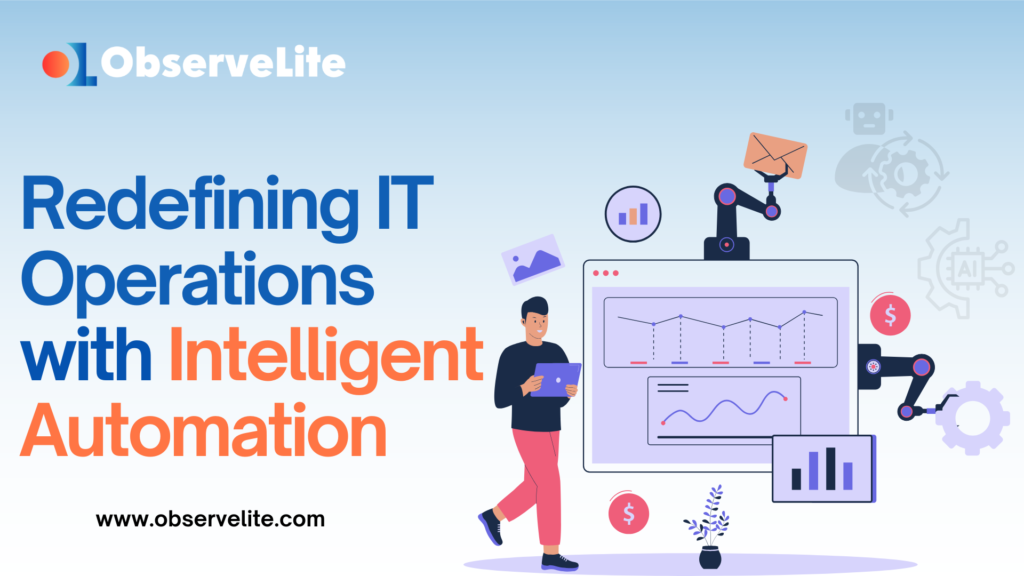However, this journey of digital expansion has introduced significant challenges, threatening the very objectives these systems were meant to achieve. Instead of enabling seamless operations, IT infrastructures have created a tangled web of interdependencies where even minor glitches can escalate into major disruptions. This complexity has forced IT and application teams into reactive firefighting mode, leaving little room for innovation and strategic growth.
In hyper-connected systems, a single misconfiguration, delayed response, or performance bottleneck can have surging consequences. For instance, a slowdown in database performance can impact application load times, frustrate users, and lead to revenue loss. These interdependencies mean IT teams must always be vigilant, but as the complexity grows, so does the margin for error.
To manage this complexity, enterprises turned to monitoring tools. These tools were meant to provide visibility into performance metrics and identify anomalies. However, they introduced a new problem: alert fatigue. IT teams are now bombarded with hundreds, even thousands, of alerts daily, many of which are false positives or low-priority notifications.
In most organizations, IT operations are still largely reactive. Teams address problems only after they’ve caused disruptions, resulting in prolonged downtime and frustrated users. The reliance on manual investigation to identify root causes further delays resolution, forcing IT teams to spend valuable time on firefighting instead of strategic planning.
Another major hurdle is the lack of unified visibility across systems. IT environments are typically managed by multiple teams—network, application, infrastructure, and security—working in silos. When issues arise, these teams often struggle to collaborate effectively, as each relies on fragmented data from different tools. This misalignment slows down resolution efforts and compounds the impact of incidents.
To address these challenges, enterprises introduced monitoring tools to track performance metrics, detect anomalies, and send alerts when issues arise. Initially, these tools provided much-needed visibility into IT systems, helping teams respond faster to disruptions.
However, as IT environments grew more complex, the limitations of monitoring tools became evident:
1. Flooded with Alerts: Monitoring tools generated excessive notifications, many of which were irrelevant or false positives. This made it difficult for IT teams to focus on critical issues.
2. Fragmented Insights: Monitoring tools often provided data in silos, requiring teams to piece together information manually to understand the root cause of issues.
3. Lack of Predictive Capabilities: Traditional tools were reactive, flagging problems only after they occurred. They offered no way to predict or prevent issues.
Instead of simplifying IT operations, monitoring tools became an additional layer of complexity, contributing to the very chaos they were meant to resolve.
Today’s enterprises are operating in an environment where the stakes have never been higher. Customers demand flawless digital experiences, stakeholders expect uninterrupted operations, and competition leaves no room for errors. Yet, IT teams are often overburdened, understaffed, and equipped with tools that fail to meet the demands of modern systems.
The combination of complexity and heightened expectations has created a perfect storm:
Downtime Costs Are Skyrocketing: Prolonged outages and slow response times lead to lost revenue, diminished customer trust, and reputational damage.
IT Teams Are Overwhelmed: The sheer volume of data and alerts makes it nearly impossible to focus on high-priority tasks.
Innovation Is Stifled: Instead of driving strategic initiatives, IT teams are stuck in a reactive cycle, addressing problems only after they disrupt operations.
The need for a smarter, more integrated approach to IT operations is clear. That’s where Observelite steps in.
Observelite continuously monitors your systems, identifying anomalies in real-time. By analyzing historical and real-time data, it recognizes patterns and deviations that signal potential issues. This allows IT teams to detect and address problems before they escalate, minimizing downtime and disruptions.
One of Observelite’s standout features is its ability to identify the exact cause of issues in seconds. Instead of requiring manual investigation, Observelite correlates data across applications, networks, and infrastructure to provide actionable insights. This drastically reduces the time to resolution and eliminates guesswork.
Observelite breaks down silos by providing a single source of truth for IT operations. Its intuitive dashboards give teams a holistic view of their systems, enabling better collaboration and faster decision-making.
Observelite filters out irrelevant alerts, ensuring that IT teams are only notified of critical incidents. This significantly reduces alert fatigue and allows teams to focus on what truly matters.
Observelite doesn’t just address current issues—it also predicts future risks. By identifying trends and patterns, it helps organizations proactively address vulnerabilities, ensuring long-term operational resilience.
Observelite’s proactive approach delivers tangible benefits for enterprises:
Enhanced Customer Experiences: By preventing outages and minimizing disruptions, Observeliteensures seamless digital interactions that keep customers satisfied.
Increased Operational Efficiency: Observelite automates repetitive tasks and provides actionable insights, freeing up IT teams to focus on strategic initiatives.
Reduced Downtime Costs: Rapid detection and resolution of issues minimize the financial impact of outages.
Empowered IT Teams: With better tools and actionable insights, IT professionals can work more efficiently and effectively.
It’s time for enterprises to leave behind outdated approaches and embrace a smarter, more resilient future. With Observelite, organizations can not only overcome the challenges of today but also unlock the full potential of their digital infrastructure for tomorrow.


